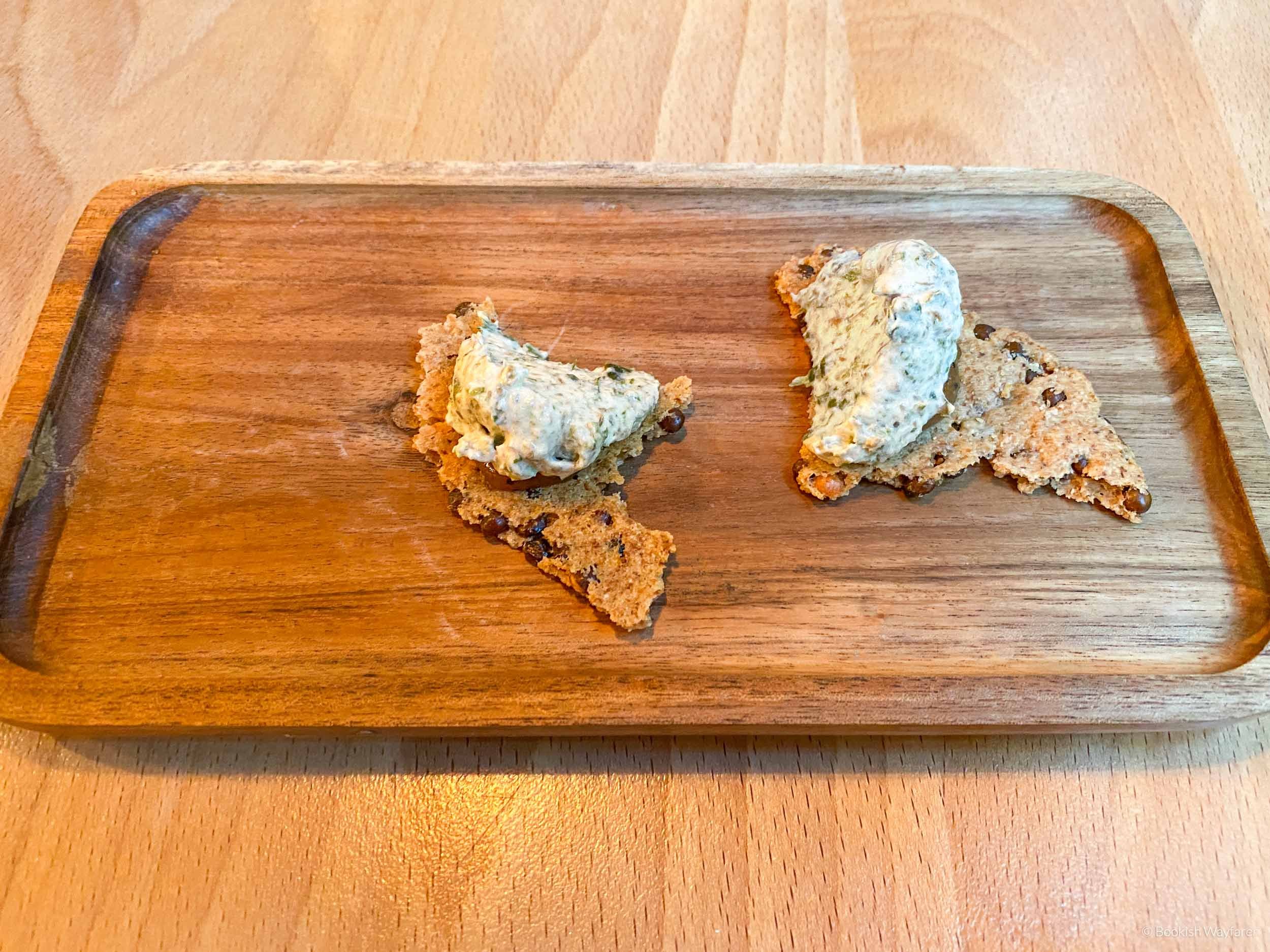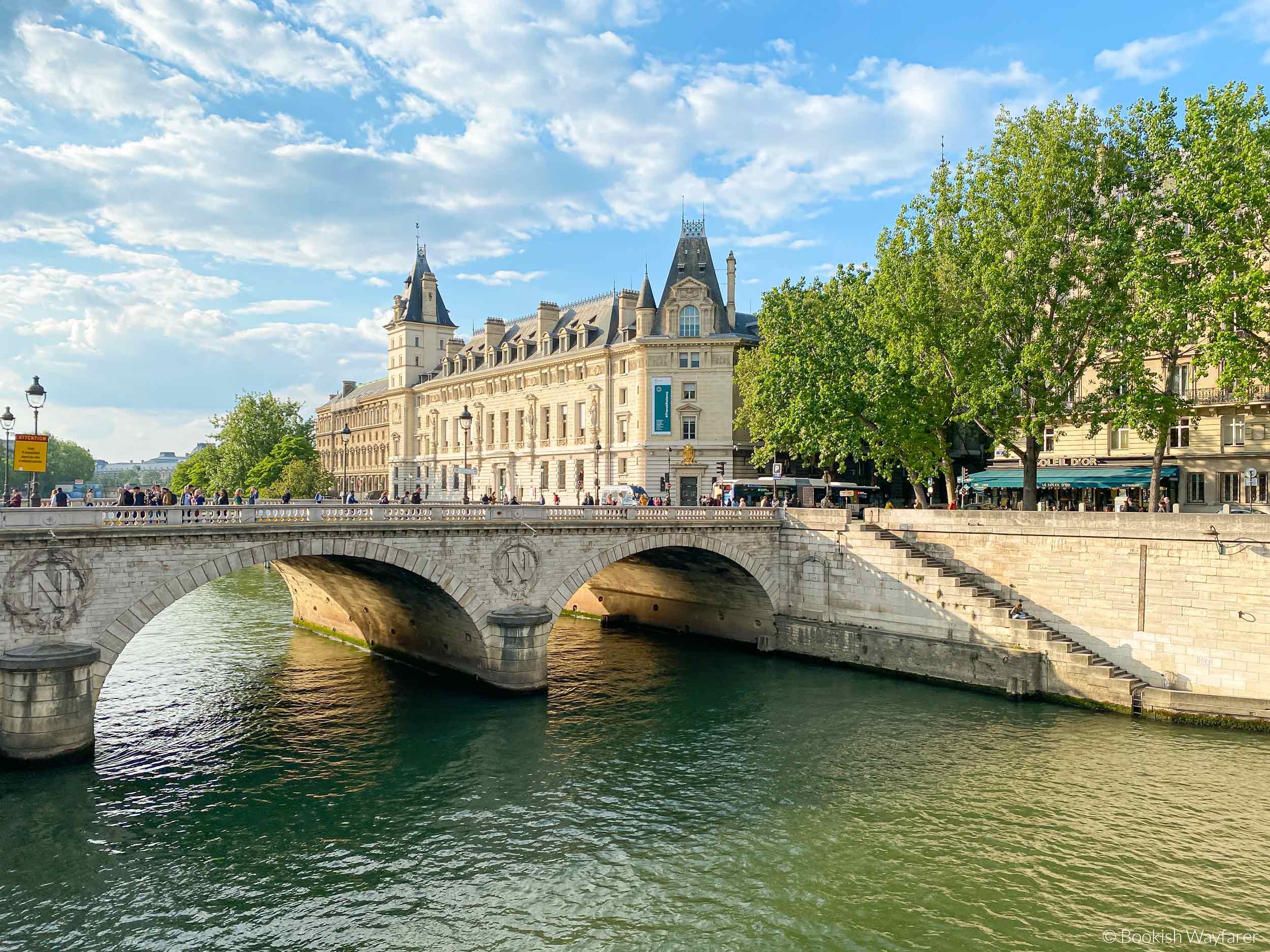Restaurant Review: La Table de Colette
Exterior of La Table de Colette
A self-described “eco-friendly” restaurant, La Table de Colette is situated on a quiet side street in Paris’ 5th arrondissement. Its bright limestone exterior and verdant front courtyard lend the space an inviting air, while the wrap-around fence simultaneously imbues it with a sense of exclusivity. It is a restaurant teeming with contradictions: casual yet elegant, simple yet nuanced, and modern yet traditional. This paradoxical nature, however, works; from the seeming dissonance arises harmony. Everything is balanced, with contrasts becoming complements.
The Space
Dining space inside La Table de Colette
La Table de Colette’s interior is both minimalist and welcoming. Decorations are sparse, but wooden tables and Edison bulbs overhead add warmth to the space. A mirror spanning the length of one wall creates airiness and the illusion of additional room, and the lack of walls between the kitchen and dining area makes the latter feel like an extension of the former. Silverware drawers seamlessly blend into the tables, and the chairs manage to be both stylistic and comfortable. The only knock against the space is the ventilation; namely, when the restaurant is at full capacity, it can become a tad stuffy and hot.
The Food
When dining at La Table de Colette for dinner, you have a few options: a five-course vegetarian menu, a five-course menu including meat, and a seven-course menu featuring meat. Diners also have the ability to add wine pairings for an additional fee.
When my husband and I dined at La Table de Colette, we opted for the five-course vegetarian menu, and what follows is a description of that. Please note that the menu at La Table de Colette is subject to change, so the current course offerings may differ.
My first course at La Table de Colette
Inspired by the Brittany coast, the region of France from which La Table de Colette’s head chef hails, the first course was meant to evoke the sensation of walking from the sea back to one’s home. The dish had three components, which were intended to be eaten in the following order: rice crisps with shallot gel and an oyster leaf (representing the sea), dehydrated beetroots with horseradish cream (symbolizing the beach), and carrot “charcuterie” served on a “leaf” (signifying one’s home). From the brininess of the ocean to the savoriness of home-cured meats, the dish successfully captured the feeling of walking home from the sea, and it did so while delivering on flavor.
Bread course
After the first course, a board with two discs of salted butter and four slices of homemade bread featuring ancient grains was brought to the table. The bread had a delicately nutty taste, and the butter was creamy with just the right amount of salt.
Lentils, lentils, lentils
Next up was a dish showcasing the lentil. Served in a ceramic casserole dish was a mix of soft, crunchy, and foamed lentils atop a bed of sliced apples and apple sauce. Garnishing the dish was a dollop of seaweed cream. The sweetness of the apples, saltiness of the seaweed, and umami of the lentils melded beautifully to create a treat for the tastebuds.
The lentil crisps that accompanied the ragout
Served alongside the lentil ragout were lentil crisps topped with apple sauce and a spoonful of seaweed cream. As with everything else that had been served so far, they were delicious.
Carrot-centric dish
The third dish comprised different preparations of carrots, including roasted and puréed, with varying degrees of incorporated lemon. While good, it failed to live up to the preceding dish and was my least favorite course.
Various preparations of cauliflower
The final dish before dessert consisted of various forms of cauliflower: crispy, mashed, and roasted. Accompanying the cauliflower was a seaweed tartar sauce, which nicely complemented the vegetable. As evidenced by my clean plate at the end of the course, I thoroughly enjoyed this dish.
The first dessert course
We were served two desserts, the first of which being a baked apple topped with a wafer and whipped cream. To balance out the sweetness of the baked apple, the dish was accompanied by a small cup of apple water and sorbet.
The second dessert course
The second dessert was more decadent, consisting of chocolate mousse topped with chocolate cake crumbles, chocolate crisps, and a sprinkle of salt. The dish was finished with chocolate sauce, which was poured onto the plate tableside. The dessert had a hint of lime, which brightened and lifted the dish, preventing it from becoming overly rich. While I found the dessert to be delectable, I was unable to finish it, as I was starting to feel quite full.
The final plate, the so-called Boat Home
As it turned out, my stomach would have to stretch a bit further, as the second dessert was not the final dish. After our plates had been cleared, a small wooden boat with metal sails was brought out. Covering the wooden deck were strawberries, mini caramel tarts, and itsy-bitsy lemon shortbreads. I managed a bite of each, which given how stuffed I was feeling, was quite the feat.
A small plastic puck with a QR code was then placed on our table, which we scanned with our phone’s camera in order to pay the bill. This was super convenient, as we did not have to wait for our server to come back to our table.
Overall
From its modern, inviting interior to its fresh, imaginative dishes, La Table de Colette is laudable in all respects. If you find yourself in Paris and desirous of a fancy-but-not-too-fancy restaurant, consider booking a table at La Table de Colette.
If you have any questions about my experience at La Table de Colette, feel free to ask them in the comments section below!
-Julia
P.S. Want to read about the rest of my time in France? Check out my What to Do in Paris: A 6-Day Itinerary post.
P.P.S. If you enjoyed this post, please consider supporting me on Buy Me a Coffee.















